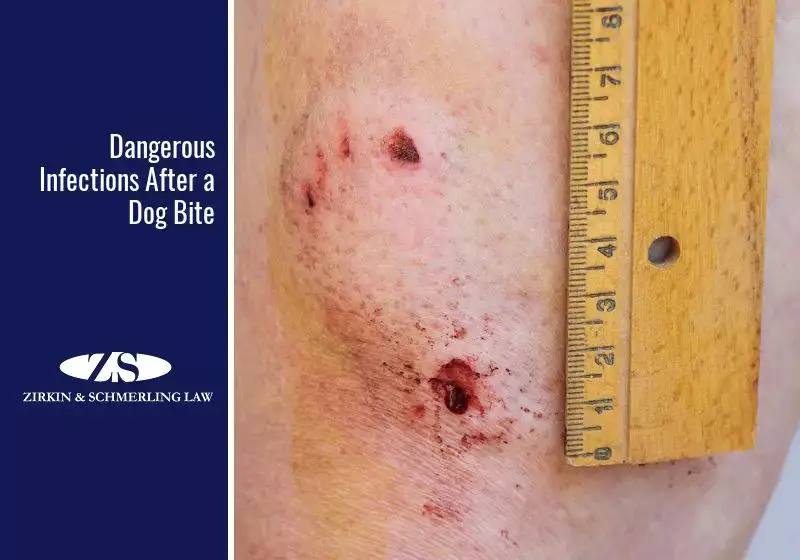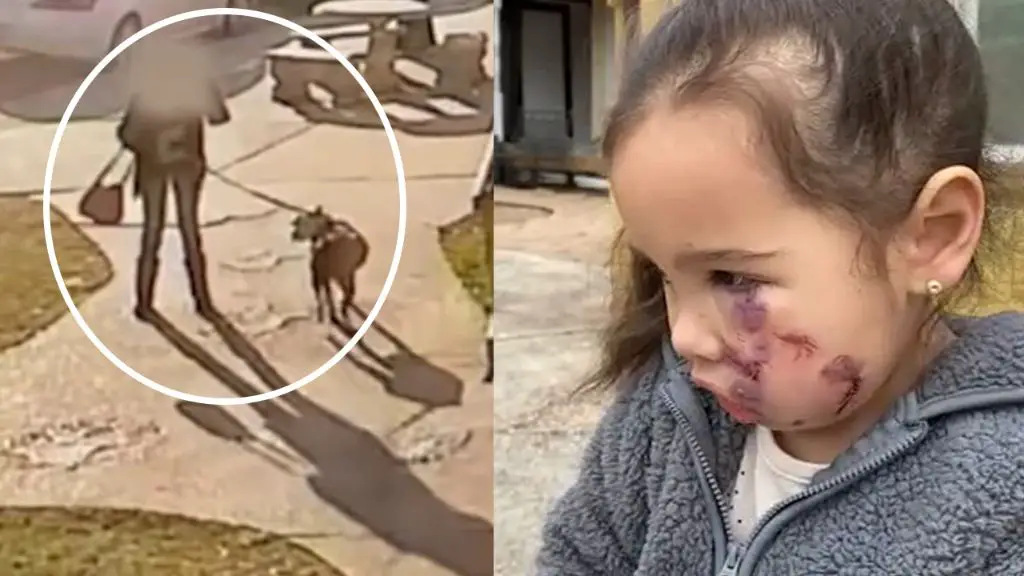Introduction
Dog bites are wounds caused by a dog’s teeth. Dogs bite for a variety of reasons, but the majority of bites occur due to the dog feeling threatened or being in pain. Most dog bites are relatively minor, but some bites can cause serious injury and even be life threatening without medical intervention.
Dog bites should be taken seriously as they can transmit infections and diseases, like rabies. Seeking medical care is especially crucial if the victim is at high risk for complications. Knowing when to seek emergency treatment versus standard medical care can prevent long-term damage and complications from a dog bite.
Signs of Infection
One of the most concerning complications of a dog bite is infection. Dog mouths contain high levels of bacteria that can enter wounds and cause infection. Signs of an infected dog bite include:

Redness – Red streaking away from the wound site indicates spreading infection. This requires urgent medical attention.
Swelling – Significant swelling around the bite area may be a sign of infection beneath the skin. This is especially concerning if the swelling expands over 24-48 hours.
Pus or discharge – Yellow/green pus oozing from the wound is a telltale sign of infection.
Fever – An oral temperature over 100.4F/38C may accompany a spreading skin infection.
Other symptoms like increasing pain, foul odor from the wound, and feeling ill can also indicate infection.
Infected dog bites require medical treatment with antibiotic medication, wound care, and possibly surgical drainage. Delaying treatment can allow the infection to spread deeper into tissues and become more dangerous.
Deep Punctures or Lacerations
If a dog bite causes a deep puncture wound or a laceration, it is important to have the injury evaluated by a doctor. Deep bites that penetrate deep into the skin and tissue can cause significant damage that may require stitches or other treatment.
Lacerations from dog bites can be deep and jagged, tearing the skin and tissue extensively. These types of wounds require cleaning by a medical professional to remove debris and prevent infection. Stitches may be needed to close the wound properly so it can heal. Severe lacerations from a dog bite need urgent medical attention.

Dog bites that leave a puncture wound or laceration that goes beyond the superficial skin layers should not be treated at home. The depth of the tissue damage needs to be assessed by a doctor. Proper cleaning, stitching if necessary, and antibiotics are typically needed for deep dog bite punctures or lacerations to prevent complications like infection or scarring.
Location on Face or Neck
Dog bites to the face or neck should receive prompt medical attention due to the risk of disfigurement and damage to major blood vessels in these areas. The complex anatomy of the head and neck contains major nerves, blood vessels, and sensory organs that can be severely injured by a dog bite.
Facial wounds in particular may require plastic surgery or leave noticeable scarring if not properly treated. Dog bites to the nose or ears can result in loss of functionality or amputation in extreme cases. Bites near the eyes or throat also pose additional risks that require urgent care to prevent permanent injury or disability.
While any dog bite can cause infection, wounds on the head and neck are especially prone to bacteria infiltration due to their proximity to mucous membranes. Post-bite infections in these sensitive areas can spread quickly. Seeking timely medical intervention helps minimize the likelihood of complications or permanent damage.
Multiple Bites
Dogs that bite multiple times often cause more damage as their teeth tear through more tissue. Each additional bite increases the risk of infection as bacteria is introduced into multiple wounds. Multiple bite wounds also tend to be more jagged, deep punctures as the dog’s teeth rip through flesh repeatedly.
With more injured tissue, there is a greater surface area vulnerable to infection. Bacteria on the dog’s teeth can be pushed deep into each bite wound, making it harder to clean thoroughly. Antibiotic ointments and cleaning at home may not be enough to prevent infection when multiple areas are affected across a large section of the body.
In addition to a higher infection risk, multiple bites often lead to greater blood loss. As the dog’s teeth lacerate blood vessels in several places, it can result in dangerous amounts of bleeding. This is especially concerning with bites to smaller children. Multiple bites also increase the likelihood of nerve, tendon or muscle damage as more areas are affected.
For these reasons, it is recommended to seek medical care promptly when bitten multiple times. The urgent care doctor or ER staff can provide the deep cleaning, stitching and antibiotics needed to treat multiple bite wounds. They can also check for any internal damage caused by the repeated punctures and lacerations.
Bites to Hands or Feet
Dog bites on the hands or feet require prompt medical attention due to the risk of tendon, ligament, nerve, or bone damage that could impair function. The many small muscles, bones, tendons, and ligaments in the hands and feet mean dog bites often result in deep puncture wounds, lacerations, fractures, or dislocations to these structures.
Bites to the hands are especially concerning because damage to the fine ligaments, tendons, muscles or nerves can make it difficult or impossible to extend, flex, grasp or manipulate the fingers and thumb. Hand function is incredibly complex, so any dog bite injury risks long-term disability or loss of dexterity if not properly treated.
With dog bites to the feet, there is danger of tendons or ligaments being severed which can impair walking. A severe bite could result in the loss of ability to push off, balance or propel the body forward when walking. In addition to loss of function, dog bites to the hands or feet also raise infection risks due to the greater concentration of bones, joints and ligaments that can trap bacteria from the dog’s mouth.
For these reasons, dog bites on the hands or feet should always be evaluated promptly by a medical professional. Surgery, antibiotics, wound care or physical therapy may be required to restore full function and reduce infection risks.
Victim is at Higher Risk
Certain groups of people may be more susceptible to complications from dog bites and should always seek medical care. This includes:

Young children – Children have weaker immune systems and smaller bodies, so an infection or blood loss from a dog bite can quickly become dangerous. Children may also have difficulty communicating their symptoms and pain levels.
Elderly – Older adults often have weakened immune systems and may be on medications that slow healing. They are also at higher risk of bone fractures and falls associated with dog bites.
Immunocompromised – Anyone with a weakened immune system, such as from HIV/AIDS, chemotherapy, transplant medications, should always seek prompt medical care for any animal bite. Their bodies have difficulty fighting off infections.
In addition to prompt medical care, these groups will likely need antibiotic treatment, aggressive wound care, and may benefit from rabies post-exposure prophylaxis.
The Dog is at High Risk for Rabies
If the dog that bit you is a stray, wild animal, or has an unknown vaccine history, it could potentially be infected with rabies. Rabies is a viral disease that infects the central nervous system of mammals, causing inflammation of the brain that is almost always fatal once symptoms appear.
Rabies spreads through the saliva of infected animals and is typically transmitted through bites. Though rare, it’s important to take it seriously, as rabies has a near 100% fatality rate if left untreated. Dogs that are up to date on their rabies vaccinations are very unlikely to transmit rabies.
However, you should seek immediate medical care if bitten by a stray or wild dog, such as a fox, or a pet that lacks a current rabies vaccine. The doctor will clean the wound thoroughly and may administer rabies postexposure prophylaxis, which involves a dose of rabies vaccine and possibly a rabies immunoglobulin shot.
Do not attempt to capture or handle the animal that bit you, as this risks further bites and injury. Instead, contact animal control to safely capture the animal for observation or testing. Prompt medical care can prevent the development of rabies after an infected animal bite.
Signs of Tetanus
Tetanus, also known as lockjaw, is a serious concern when bitten by a dog. Tetanus is caused by the bacteria Clostridium tetani and leads to painful muscle contractions, particularly in the jaw and neck muscle. Common signs of tetanus include:
- Lockjaw – tight, stiff muscles in the jaw that can cause painful muscle spasms and lock the jaw shut.
- Difficulty swallowing – the muscles used for swallowing can go into spasm, making it hard to swallow.
- Stiffness and muscle spasms in other parts of the body such as the neck, back, arms and legs.
Tetanus requires immediate medical attention and can be life-threatening. Seek emergency care if you experience any of these signs of tetanus after a dog bite.
When to Seek Emergency Care
You should seek emergency medical care right away if the dog bite is very severe, has caused extensive injuries, or if there are worrisome symptoms present. Some situations that require emergency care include:

- Very severe bites that have caused extensive lacerations, puncture wounds, muscle/tissue damage, or bleeding that cannot be controlled.
- Bites to the face, head, neck, hands or genitals that have caused severe lacerations or injuries.
- Uncontrolled bleeding from the wound that cannot be stopped with direct pressure.
- Signs of a limb artery puncture or severe vascular injury.
- Evidence of a broken bone or fracture caused by the bite.
- Severe crush injuries from the bite causing compartment syndrome.
- Facial swelling making it difficult to breathe or swallow.
- Symptoms of shock such as low blood pressure, rapid heart rate, dizziness or fainting.
- Severe pain that is not controlled with over-the-counter medication.
- Signs of infection within 24 hours of the bite such as redness, swelling, oozing pus, red streaks, fever.
In these situations, emergency care is crucial to properly treat the bite wounds, stop bleeding, assess for vascular or nerve damage, determine if reconstructive surgery is needed, and to prevent the risk of severe infection. Prompt care can help minimize scarring and improve healing outcomes.